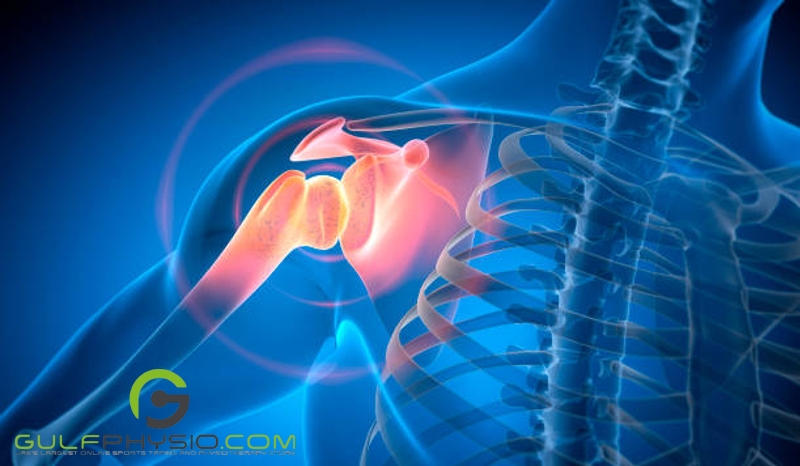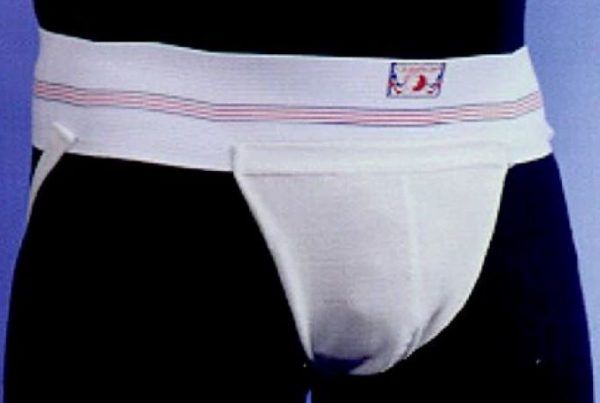You’ve probably heard of the phrase “carrying the weight of the world on your shoulders”, which originates from Greek Myth. According to the story Zeus punished the titan Atlas by carrying, not the world, but the heavens. Over time the story has morphed into him carrying the weight of the world instead, thus giving us the popular saying.

Too bad Atlas didn’t have access to the internet, because maybe then he would have an easier time carrying all that weight after reading this article. Luckily for you dear reader, you won’t have to carry the weight of the world on your shoulders to use this guide and learn about the basics and benefits of shoulder-taping.
What is “Shoulder Taping”?

Shoulder Taping is a technique that prevents injury or as an accompanying rehabilitation treatment in the event of injury. Used by athletes and exercise enthusiasts as a way to optimize their physical activities, and by medical professionals as accompanying rehabilitation treatment, such as in this research that looked into “Shoulder Taping and Neuromuscular Control”.
The Benefits of Shoulder Taping
As mentioned in the previous section, shoulder taping is most common in sports and the medical field. In this section, we are going to take a look at the uses of shoulder taping in these specific fields.
Shoulder Taping In Exercise and Athletics
Utilizing tape has been a practice in athletics for centuries and with advancements in science and technology modern taping techniques developed to better benefit athletes and optimize their performance.

- Prevents Injury –The book “Fundamentals of Sports Injury Management” describes the shoulder as follows: The loose structure of the shoulder complex enables extreme mobility but provides little stability. As a result, the shoulder is much more prone to injury than the hip. Individuals who engage in sports such as baseball, rugby, and swimming are the most susceptible to shoulder injuries. Making use of shoulder taping can provide additional stability and support that minimizes the chances of injury.
- Pain Relief – As mentioned above, the shoulder is an extremely mobile joint. This leaves it prone to instability from various causes such as trauma, injury, and even illness. Research shows that using specialized sports tape (such as Kinesiology Tape) relieves this pain.
Shoulder Taping In The Medical Field
Similar to taping in sports, using tapes and wraps in the medical field has been around for centuries. Early medicine men made use of strips of cloth to treat wounds with salves to alleviate pain, and modern medicine has taken that concept and advanced it for modern medicine and treatment.

- Rehabilitation – Taping has become a popular assistive treatment in recent years for multiple reasons. Similar to athletic taping, medical taping provides pain relief to patients, the biggest difference is the type of pain that is treated. In athletics, the injuries are sprains or strains, in the medical field, taping treats more serious cases like hemiplegia caused by a stroke.Medical taping for cases like these in the shoulder becomes tricky due to the complex mechanisms and structures in the shoulder essential for movement.
Our Thoughts
In the event of an injury, shoulder taping is a procedure used in conjunction with rehabilitation therapy to prevent further damage. Athletes, fitness enthusiasts, and medical professionals utilize it frequently to maximize their physical activity. Shoulder taping has several advantages, such as reducing pain, preventing injuries, and enhancing performance. Because of the shoulder joint’s mobility, injuries can occur more easily. By adding extra stability and support, taping helps reduce the risk of injury.
Want to know more about Taping? Then read our articles “Maximising Safety in Sports: The Essential Guide to Athletic Taping for Injury Prevention” and “Taping: A Beginners Guide” or learn more from our blog here.
Disclaimer
GulfPhysio.com and all of its content are for informational purposes only. All information is believed to be accurate at the time of posting and should NOT be construed as professional medical advice. Please seek a medical professional in the event of pain or injury.



